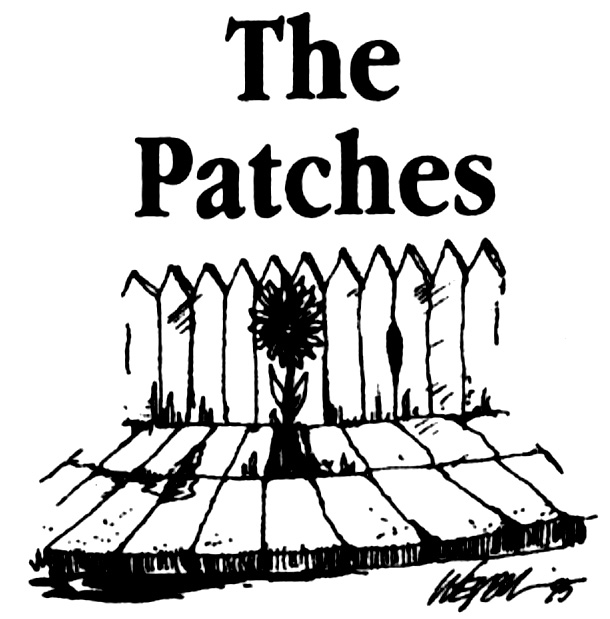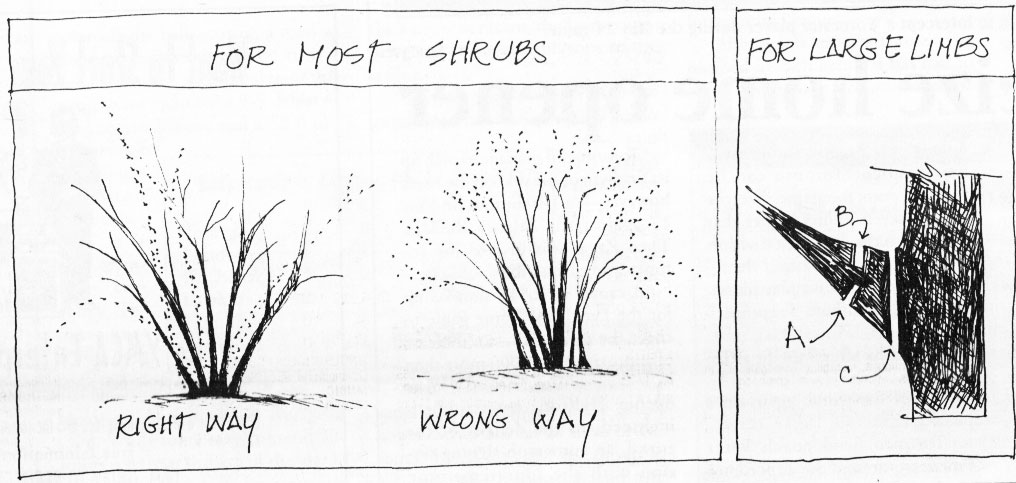What to plant in your container garden
In May 2020, the Annex Gleaner celebrates 25 years of publishing. In acknowledgement of this history we are offering highlights of our past; this feature “P” is pruning procedures is from June 1998 by gardening columnist Bardi Vorster.

By Bardi Vorster
One of the most misunderstood and mismanaged techniques in gardendom is the act of pruning.
How else can one explain the appalling buctchery of countless trees and shrubs which go on annually right here in Toronto and even in the Annex. Whyever do people assume that shrubs should be perfectly round?

Have you ever seen a really glorious flowering shrub with blunt ends?
How is that so many landscape maintance companies still perpertrate the bowl on head school of pruning? Are they ignorant of plant material? Possibly. Are they incapable of subtlety? Probably. Can you tell this a pet peeve?
The tools
Anyone who has gardened for more than five days knows that a pair of hand pruners is essential for various tasks – from cutting the perfect rose stem to eliminating deadwood. Perhaps we are seduced by the ease of electric prunning shears which create the order of straight lines in a jumble of greenery; the mechanically inclined, topiary maniacs and growers of hedges will need them. They can be rented. Of course if you are trying to reach two inch diamter or higher branches, long handles loopers are useful but a bit more difficult to control. If you are really serious, a small but viscious pruning saw with a curved blade is essential as well.
Timing
Stop! Before you cut, think of it this was way – every cut should have a well considered reason.
These are reasons to cut anytime:
- Prune any dead or diseased wood.
- Eliminate any twigs or branches that are rubbing against each other – the weakest must go.
- Cut out (at the bottom) very weak limbs which are bending under the weight of a few leaves at the ends of the branches.
- Sometimes it is necessary to ruthlessly chop a branch intruding in your path; but it is possible (except for mature evergreens) to do it gracefully. Look for the point where you can do it without a stump as a remainder.
- Remove water sprouts as soons as you notice them. Water sprouts are shoots that grow straight up from a branch; they are particulary noticeable on fruit trees – but that’s another specialty.
It’s important to note that most shrubs and some roses (climbing types) flower on old wood – that is, growth of this year will produce flowers next season. Consequently, it stands to reason that yearly pruning for shape, and balance, should be done after the shrub flowers.
Shrubs such a Hydrangea and Spirea bumalda produce flowers on the growth of the current season. Pruning should be done in the fall or early spring.
Evergreens generally do not produce new growth from old wood at all, a fact which should be remembered when trimming lower branches of your favourite Colorado Blue Spruce – they don’t grow back.
Broadleaf evergreeens and rhododendrons scracely need pruning at all; a little shaping and elimination of deadwood or very leggy branches is all that is required. I must say that it is heartbreaking to see balls of Euonymus fortuneii unless it is on a standard.
Pruning mature trees is best left to professionals as considerable skill is necessary to do it properly. A certified arborist is the professional to contact. Ontario has a certifcation program which ensures a basic knowledge and at least three years experience.
Making the cut
- New growth will come from the bud, therefore, choose a bud which is pointing to the outside of a shrub or rose.
- With hand pruners, position the hook to the discarded side of the branch and cut through in one motion. They must be sharp to avoid tearin the bark.
- Angle the cut so the water will run off the branch.
- Position the cut neither too close to the bud (it will dry out and die) nor too far away (it will leave an ugly stump).
- If the stem is two inches in diameter or more, a pruning saw is required. Make the first cut beneath the branch, saw through from the top and make a final cut to perfect the angle and neatness if necessary.
Very important
Before you trim, observe the way the shrub wants to grow – vase shaped, horizontally, or naturally round. When you are finished, a shrub should look tidy and in shape appropriate for the species. In fact, it should appear unpruned.
Shapely hedges
Contrary to regular shrub prunning which removes branches from the bottom, hedges are sheared to promote end growth. They need to be trimmed at least once a year, usually after the new growth has sprouted. Ensure that the bottom is wider than the top. This allows light to reach the bottom and inside of the hedge, thereby promoting healthy growth.
